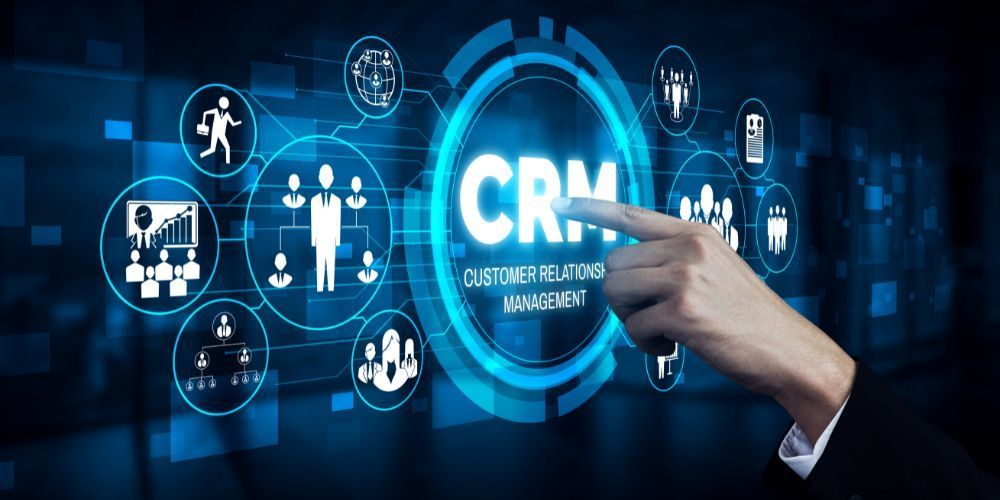Translating MarTech Value for Executive Decision Makers
In my years leading digital transformation initiatives, I've repeatedly encountered a familiar scenario: a marketing team identifies a powerful MarTech solution that could revolutionize their operations, only to face resistance from leadership unwilling to approve the investment. This disconnect isn't surprising when you consider that 61% of CMOs report difficulty proving the ROI of their marketing technology investments.
Having consolidated over 1,200 websites into a cohesive platform and implemented numerous marketing automation systems across multiple industries, I've learned that securing buy-in for MarTech investments requires more than just enthusiasm for new technology. It demands a strategic approach to demonstrating value in terms executives understand.
This guide offers tactical strategies I've personally used to justify MarTech investments to skeptical decision-makers.

Understanding the MarTech ROI Challenge
Traditional ROI models often fail for MarTech investments because they're designed for simpler, more linear investments. MarTech stacks deliver value across multiple dimensions and timeframes, making them challenging to evaluate using conventional frameworks.
The disconnect between technical teams and executive decision-makers compounds this problem. While your team might be focused on capabilities, features, and technical improvements, executives are concerned with bottom-line impact, competitive advantage, and strategic alignment.
The first step in overcoming resistance is recognizing the need to shift from a cost-center to a value-driver mindset. MarTech isn't just an expense—it's an investment in capabilities that enable revenue growth, operational efficiency, and competitive differentiation.
Addressing Common MarTech Objections
Tackling Licensing Cost Objections
When executives balk at licensing costs, focus on the cost of inaction. What opportunities are being missed? What inefficiencies persist? For instance, when implementing a marketing automation platform at a financial services firm, I demonstrated how manual processes were costing the equivalent of 2.3 full-time employees annually—far exceeding the licensing costs.
Tactical approach: Present a side-by-side comparison of current operational costs versus projected costs with the new technology, including labor savings, reduced error rates, and opportunity costs.
Countering Concerns About Multiple Licenses
Multiple license requirements often trigger concerns about scope creep. Address this by presenting a phased implementation plan that prioritizes licenses for key users first, with clear criteria for expanding access.
Tactical approach: Create user personas with specific use cases and expected outcomes for each license type, demonstrating the incremental value of each additional license.
Reframing Ongoing Support Costs
Support and maintenance expenses aren't just keeping the lights on—they're investments in continuous improvement. When a healthcare client questioned ongoing support costs for their CRM system, I reframed these as "capability enhancement investments" with quarterly value delivery milestones.
Tactical approach: Develop a support value roadmap that shows how ongoing investment translates to platform improvements, enhanced capabilities, and adaptation to changing business needs.
Addressing Integration Complexity and Technical Debt
Integration challenges are valid concerns, but they're often overstated. Modern MarTech platforms typically offer robust APIs and pre-built connectors that significantly reduce integration complexity.
Tactical approach: Present a technical integration assessment that includes:
- Inventory of existing integration points
- Evaluation of vendor-provided connectors
- Timeline and resource requirements for integration
- Comparison of integration costs versus the benefits of unified data and workflows
Managing Expectations Around Timeline to Value
Executives want quick wins, but MarTech implementations require time to deliver full value. The key is setting realistic expectations while identifying early success indicators.
Tactical approach: Create a value realization timeline that clearly maps:
- Immediate benefits (first 30-90 days)
- Medium-term improvements (3-6 months)
- Long-term transformation (6-12 months and beyond)
For each timeframe, identify specific, measurable outcomes that demonstrate progress toward full ROI realization.
Navigating Data Privacy and Security Risk Objections
Data privacy concerns are legitimate and should be addressed comprehensively. When implementing a global identity management solution for a pharmaceutical company, we developed a robust security and compliance framework that actually improved overall data governance.
Tactical approach: Partner with IT security and legal teams to develop a comprehensive risk assessment and mitigation plan that demonstrates how the MarTech investment can enhance—not compromise—your organization's security posture.
Mitigating Fears About Implementation Disruption
Change management concerns often focus on disruption to existing processes. Acknowledge these risks while emphasizing how proper planning minimizes business impact.
Tactical approach: Develop a detailed implementation plan that includes:
- Business continuity measures during transition
- Training and enablement strategies
- Parallel run periods for critical systems
- Clear rollback procedures if issues arise

Practical Metrics That Matter to Executives
To convince executives, focus on metrics that directly connect to business outcomes they care about:
Revenue Impact Metrics
- Conversion rate improvements
- Customer acquisition cost reductions
- Customer lifetime value increases
- Pipeline velocity acceleration
- Cross-sell/upsell effectiveness
Example: For an e-commerce client, I demonstrated how a new marketing automation platform increased repeat purchase rates by 24% within six months, directly impacting revenue growth.
Efficiency Metrics
- Time savings per campaign or customer interaction
- Resource reallocation to higher-value activities
- Reduction in manual errors
- Decreased time-to-market for campaigns
- Improved team productivity
Example: A media company's marketing team reclaimed 22 hours per week after implementing automated reporting tools—time redirected to strategic content development that drove higher engagement.
Compliance and Risk Mitigation Value
- Improved data governance and protection
- Enhanced audit trails and documentation
- Reduced compliance violations
- More consistent regulatory adherence
- Decreased exposure to data breaches
Example: A financial services client reduced their regulatory reporting time by 64% while improving accuracy, demonstrating both efficiency gains and risk reduction.
Building Your ROI Case Study
Pre-Implementation Baseline Establishment
How to do it: Document your current state by creating process flow diagrams of your existing workflows. Time each critical marketing activity with a simple spreadsheet tracking hours spent on repetitive tasks. Measure error rates by reviewing the last 3-6 months of campaigns for corrections or missed deadlines. Capture screenshots of current performance metrics from your existing platforms.
Executive perspective: Your CFO and COO are looking for concrete "before" metrics that establish a clear baseline. They need to see the current state quantified in terms of time, money, and missed opportunities. I've found that executives respond particularly well to time studies that translate marketing activities into dollar values based on team hourly rates.
Data Collection Strategies During Implementation
How to do it: Implement weekly user surveys via simple tools like Microsoft Forms or Google Forms to track time savings. Set up automated performance tracking by configuring your analytics platform to specifically tag and track activities related to your new MarTech implementation. Run A/B tests between old and new systems by maintaining parallel operations for critical campaigns during the transition period.
Executive perspective: Your CEO wants to see progressive improvement during implementation, not just end results. Create a simple dashboard showing weekly improvements in key metrics they already trust. I've found that showing incremental gains during implementation builds executive confidence and patience for the complete rollout.
Creating Compelling Visualizations
How to do it: Use before-and-after comparison charts with dramatic color contrasts to highlight improvements. Create executive dashboards focusing only on 3-5 KPIs they've previously identified as critical. Develop interactive ROI calculators using Excel or Google Sheets that allow executives to adjust variables and see the impact.
Executive perspective: Most executives are visual decision-makers with limited time. They need to grasp the impact in seconds, not minutes. I've consistently seen better results using simple, high-contrast visuals with a single clear message per chart rather than comprehensive dashboards trying to show everything at once.
Tactical Guide: Presenting Your Case
Timing Your Pitch for Maximum Impact
Strategic timing can significantly influence decision outcomes:
- Align with annual planning and budgeting cycles
- Present after successful pilot programs
- Leverage moments when competitors announce similar initiatives
- Time proposals to address recent business challenges
- Coordinate with broader digital transformation initiatives
Speaking the Language of the C-Suite
Different executives are motivated by different outcomes:
- CFO: Focus on efficiency ratios, cost avoidance, and revenue acceleration
- CEO: Emphasize market positioning, competitive advantage, and strategic alignment
- CIO/CTO: Address integration, security, and technical debt reduction
- CMO: Highlight improved marketing effectiveness and customer experience
Using Competitor Examples Strategically
Competitive pressure can be a powerful motivator:
- Present anonymized case studies from similar organizations
- Share industry benchmark data showing adoption trends
- Highlight innovative competitors leveraging similar technologies
- Quantify the competitive disadvantage of inaction
- Frame MarTech as table stakes rather than competitive advantage
Maintaining Momentum After Approval
Ongoing ROI Tracking Methodologies
How to do it: Establish a value realization framework by creating a spreadsheet that maps specific MarTech capabilities to business outcomes with clear milestones. Implement automated ROI dashboards using your existing BI tools or even simple spreadsheets with automatic data imports. Conduct quarterly business reviews by scheduling recurring meetings specifically focused on value delivery, not feature updates.
Executive perspective: Your executive sponsor needs ammunition to defend the investment to their peers. Provide them with a one-page ROI summary they can reference in executive meetings. I've found that the most successful MarTech implementations include an executive-focused "value delivered to date" dashboard that automatically updates with the latest metrics. This dashboard should explicitly connect technology performance to business outcomes the executive previously committed to.
Regular Reporting Frameworks
Create a communication cadence that keeps stakeholders informed:
- Monthly executive summaries highlighting key wins
- Quarterly deep dives into ROI metrics
- User adoption and satisfaction reporting
- Ongoing cost-benefit analysis
Building a Culture of ROI Accountability
Successfully proving MarTech ROI isn't just about securing initial investment—it's about creating a culture where technology investments are consistently evaluated against business outcomes. This approach positions marketing technology as a strategic business enabler rather than a cost center.
The incorporation of AI capabilities into MarTech stacks has added new layers of complexity to ROI justification. In my recent implementations, I've observed that executives are simultaneously more excited about AI's potential and more skeptical about its immediate ROI. The "black box" nature of some AI systems makes traditional ROI frameworks even less applicable. I've found success by focusing on concrete use cases with measurable outcomes rather than the technology itself—showing exactly how AI will streamline specific workflows or enhance customer experiences in ways that directly impact revenue or reduce costs.
By methodically addressing objections, focusing on metrics that matter to executives, and maintaining a disciplined approach to ROI measurement, you can transform how your organization views MarTech investments. More importantly, you position yourself as a strategic business partner who understands how to drive measurable value through digital transformation.
Remember that proving ROI is as much about communication as calculation. The most sophisticated analysis will fall flat if it doesn't resonate with the priorities and perspectives of your decision-makers. Take the time to understand their concerns, speak their language, and focus on outcomes they value.
In my experience across multiple industries and technologies, the marketers who succeed in securing and maintaining MarTech investments aren't necessarily those with the most compelling technology—they're the ones who most effectively demonstrate how that technology drives business results that executives already care about.
How long should it typically take to see measurable ROI from a new MarTech investment?
While every implementation is different, you should expect to see initial indicators of value within 90 days of proper implementation. However, full ROI realization typically takes 6-12 months for most enterprise MarTech solutions. The key is to establish a phased value delivery approach with specific measurement milestones.
Start by identifying quick wins that demonstrate immediate operational improvements (like time savings or error reduction) in the first 30-60 days. By month three, you should see initial performance improvements in key metrics like engagement rates or lead quality. Full financial return, particularly for complex implementations involving multiple integrations, generally requires at least six months of operation, optimization, and user adoption.
Remember that your timeline to ROI should be part of your initial proposal, with clear expectations set with executives about when specific value milestones will be reached.
How do I justify MarTech investments when our competitors aren't visibly investing in similar technologies?
This scenario actually presents a strategic opportunity. When competitors aren't making visible MarTech investments, you can position your organization to gain first-mover advantage in your market.
First, frame the investment in terms of differentiation rather than keeping pace. Show executives how the technology enables unique customer experiences or operational efficiencies that can become competitive differentiators. Second, look beyond direct competitors to adjacent industries or markets where similar technologies have demonstrated value. Third, quantify the opportunity cost of waiting – what growth opportunities or efficiencies are you missing by delaying implementation?
The most compelling approach is to demonstrate how MarTech investment enables the organization to better deliver on existing strategic priorities. Focus on how the technology solves specific business problems or enables new capabilities that align with your executive team's stated vision and goals.
With AI now being integrated into many MarTech platforms, how do I separate the hype from real value when making my case?
Approaching AI-enhanced MarTech requires particular rigor in your ROI justification to cut through the hype. Start by identifying specific, concrete use cases where AI capabilities directly solve existing business problems rather than focusing on the technology itself. For example, instead of highlighting "AI-powered personalization," focus on "reducing shopping cart abandonment by 15% through targeted interventions."
Develop a clear before-and-after measurement framework for each use case. What specific metrics will improve, by how much, and how will this impact business outcomes? Use benchmark data from vendors and industry research to set realistic expectations.
Be transparent about the uncertainty and learning curve. Set expectations that AI capabilities often require training periods and optimization to deliver full value. Consider proposing a phased approach with a limited initial implementation focused on 1-2 high-value use cases where results can be clearly measured.
Most importantly, address data requirements explicitly. AI's effectiveness depends on data quality and availability, so include an assessment of your organization's data readiness as part of your ROI justification. This demonstrates that you've thought beyond the technology to the practical implementation requirements.










